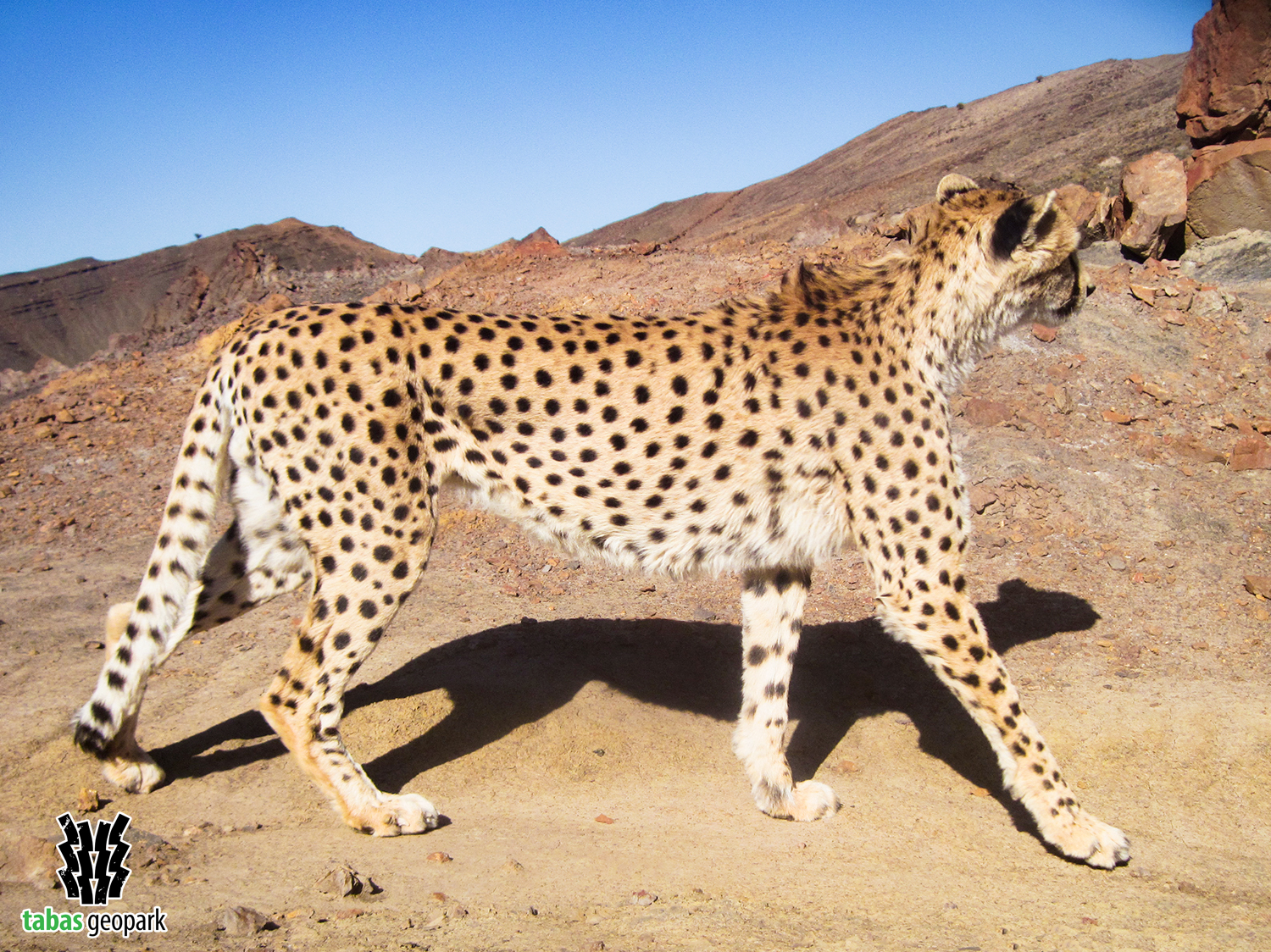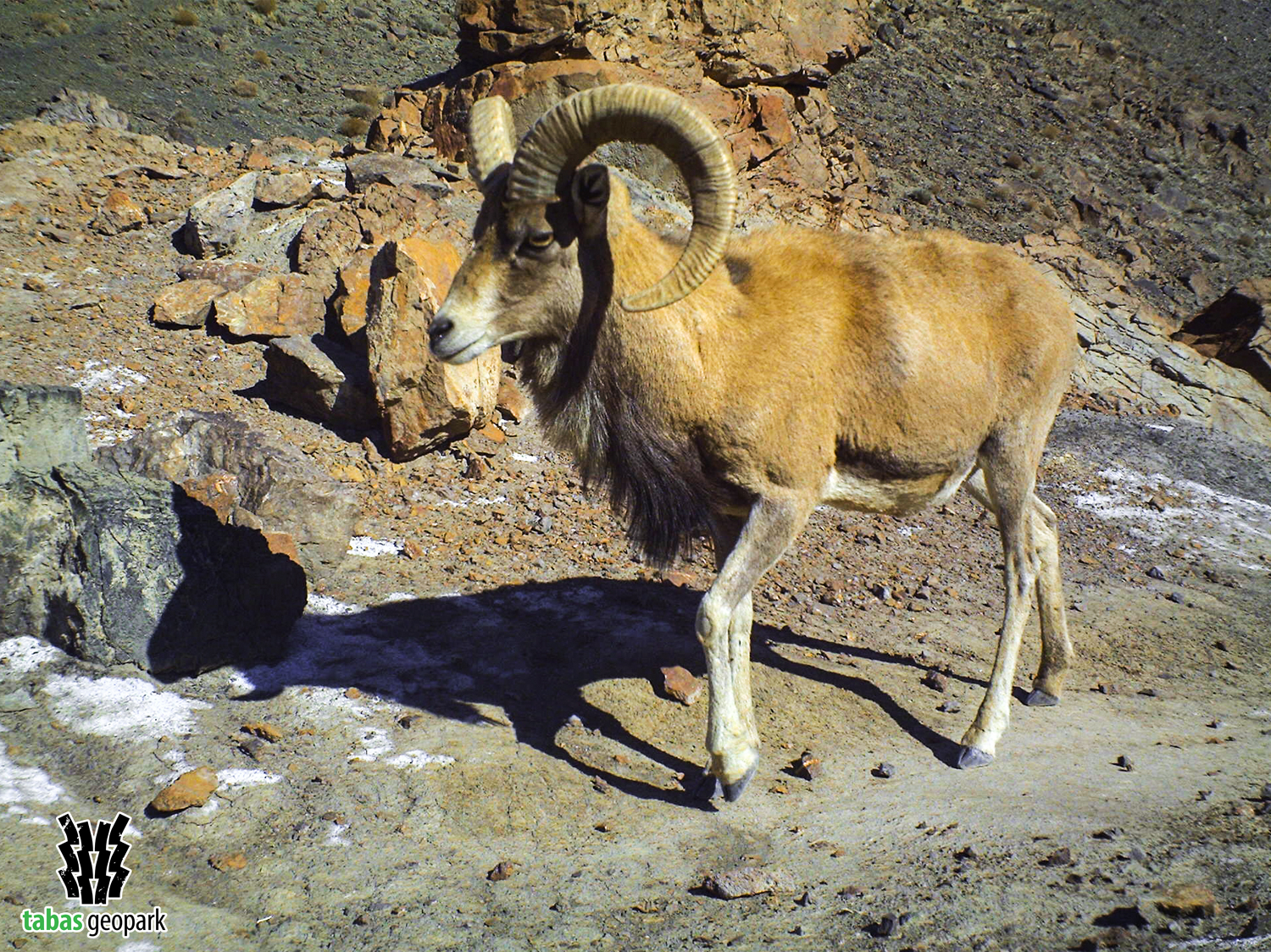Geosite of Naybandan Wildlife Refuge, with an area of 1,516,994 hectares, is the largest managed wildlife Refuge in Iran and one of the most important habitats for Asian cheetahs. This protected Refuge covers a wide area of Tabas Geopark, and according to the report of the Asian Cheetah Conservation Project, there are about 13 to 16 cheetahs in Naybandan Wildlife Refuge, accounting for the highest number of cheetahs among the protected habitats in Iran. Tectonic activities (folds and faults) have led to the formation of various forms of topography from an altitude of 600 to 3009 meters in this area. Existence of different topography has caused a wide range of plants and consequently a very spectacular diversity of animals in this area of Iran.
This Refuge has been under protection since 1995, and various forms of plains, hills, sand seas, high mountains, and large salt marshes can be seen in it. The main source of water in this area comes from the springs. Sand dunes and dense forest masses of haloxylon are among the unique features of this region. Several historical caravanserais from ancient times have remained in this area due to its location along the Silk Road. Naybandan Wildlife Refuge is one of the most untouched and least conflicted habitats in the country in terms of the entry of industry and domestic livestock. There are a total of 177 plant species in this Refuge, some of which include Amygdalus scoparia, bitter almonds, wild figs, tamarix, haloxylon, atraphaxis, mugworts, zygophyllum, asafoetida (Ferula assa foetida), colocynth and Carpobrotus. Cheetahs, leopards, caracals, wild cats, chinkara (Gazella bennettii), Urial mouflon, wild goat, hyenas, Blanford’s fox, Rüppell’s fox, common foxes, and jackals are the most important mammals. The most important birds of this shelter are Bustards, desert pleske’s ground jay, Pterocles coronatus, partridge, see-see partridge, vulture, eagle, hen harrier and falcon. Pseudocerastes, Saw-scaled vipers, Schokari sand racer and monitor lizards, agamas, and lizards are some of its most important reptiles. It should be noted that Jangal is the name of a cheetah about 12 years old that lived in this region as the oldest cheetah in the world. Jangal’s body was discovered in 2001 near the Aliabad Environmental checkpoint in the Naybandan Wildlife Refuge, which had died due to old age and possibly inability to hunt. Also, this Refuge has one of the darkest celestial regions of Iran and no light pollution is observed in large parts of it. Accordingly, this region is considered as astronomical activities and observation of astronomers.
– The scientific resources are available in the management of Tabas Geopark.
The use of this article is unrestricted by mentioning the source.



